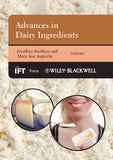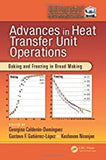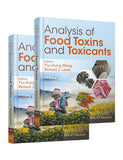Natural Food Additives, Ingredients and Flavourings edited by David Baines
Natural Food Additives, Ingredients and Flavourings
edited by David Baines
Natural Food Additives, Ingredients and Flavourings covers the legislative issues relating to natural food additives and ingredients, the range of natural food additives and ingredients, and their applications in different product sectors.
Features:
- ‘natural’ in the context of food ingredients, with focus on natural food colourings, low-calorie sweeteners and flavour enhancers
- consideration of natural antioxidants and antimicrobials as food ingredients
- examines natural ingredients in savoury food products, baked goods and alcoholic drinks, natural plant extracts in soft drinks and milk-based food ingredients
Part One focuses on natural food colourings, low-calorie sweeteners and flavour enhancers, followed by a consideration of natural antioxidants and antimicrobials as food ingredients. The book goes on to address clean label starches and proteins, the application of natural hydrocolloids as well as natural aroma chemicals and flavourings from biotechnology and green chemistry.
Part Two considers specific applications in different products. Also covered in this section are natural ingredients in savoury food products, baked goods and alcoholic drinks, and natural plant extracts in soft drinks and milk-based food ingredients.
Contents
1. Defining the term natural in the context of food products
- The definition of natural in the European Union
- The definition of natural in the United States
- The international organization of the flavour industry (IOFI) guidelines for the interpretation of natural
- The definition of natural in other countries
- Natural as applied to food additives and food
Part 1: Natural Additives, Ingredients and Flavourings
2. Natural food and beverage colourings
- Natural food and beverage colourings currently used commercially
3. Natural low-calorie sweeteners
- Commercial bulk low-calorie sweeteners
- Commercial high-potency sweeteners
- Potential future sweeteners
- Other sweeteners
4. Natural food and beverage flavour enhancers
- Savoury flavour enhancement; tastants and ingredients rich in umami taste
- Umami taste modifiers and taste enhancing peptides
- Maillard-derived taste enhancers
- Interactions in the perception of non-volatile tastants and volatile or semi-volatile flavour compounds
5. Natural antioxidants as food and beverage ingredients
- Natural antioxidants: background
- Natural antioxidants: properties, manufacture and applications
6. Natural antimicrobials as additives and ingredients for the preservation of foods and beverages
- Natural antimicrobials derived from microorganisms
- Natural antimicrobials derived from animals
- Natural antimicrobials derived from plants
- Essential oils
- Enzyme-released antimicrobial agents
- Other enzymes
7. Native, modified and clean label starches in foods and beverages
- Manufacture of starch in plants
- Starch composition
- Amylose and amylopectin
- Starch: extraction and manufacture
- Starches from different sources
- Modification of starches
- Clean label starches
8. The application of natural hydrocolloids to foods and beverages
- The main types of hydrocolloids used in foodS and beverages
- Natural hydrocolloids: their manufacture, properties and applications
9. Proteins as clean label ingredients in foods and beverages
- The range of clean label proteins used as ingredients in foods and beverages
- Examples of applications of proteins in foods and beverages
10. Natural aroma chemicals for use in foods and beverages
- Natural aroma chemicals and the origins of organic chemistry
- Naturals in the st century
- Quality control and natural aroma chemicals
- Natural aroma chemicals by direct isolation
- Natural aroma chemicals by traditional food preparation processes: cooking chemistry
- Natural aroma chemicals by biotechnology
- Assessing the natural status of aroma chemicals
11. Natural flavourings from biotechnology for foods and beverages
- Production of natural flavors by de novo synthesis
- Production of natural flavors by biotransformation
12. Natural flavourings from green chemistry for foods and beverages
- Green chemistry drivers
- Green extraction techniques
- Green synthesis techniques
Part 2: Applications in Different Products
13. Applications of natural ingredients in savoury food products
- Natural ingredients for savoury foods
- Formulating savoury products using natural ingredients
- Crisp and snack seasonings
- Liquid savoury products
- Coating systems for savoury products
- Reduction, replacement and removal of particular ingredients
14. Applications of natural ingredients in baked goods
- Evaluation of the “naturalness” of selected bakery ingredients
- Issues to consider when using natural ingredients in baked goods
15. Applications of natural plant extracts in soft drinks
- Fruit juices and oils produced by expression
- Natural additives for soft drinks produced by distillation
- Natural extracts produced by solvent extraction
- Usage amounts and label declarations
- Water as an ingredient in soft drinks
16. Applications of natural ingredients in alcoholic drinks
- Flavouring agents and colorants
- Process aids
- Yeasts, bacteria and fermentation aids
- Water
17. Dairy products and milk-based food ingredients
- Milk as a source of food
- Dairy products and food additives, ingredients and flavourings
- Milk as a source of food ingredients and flavourings


















